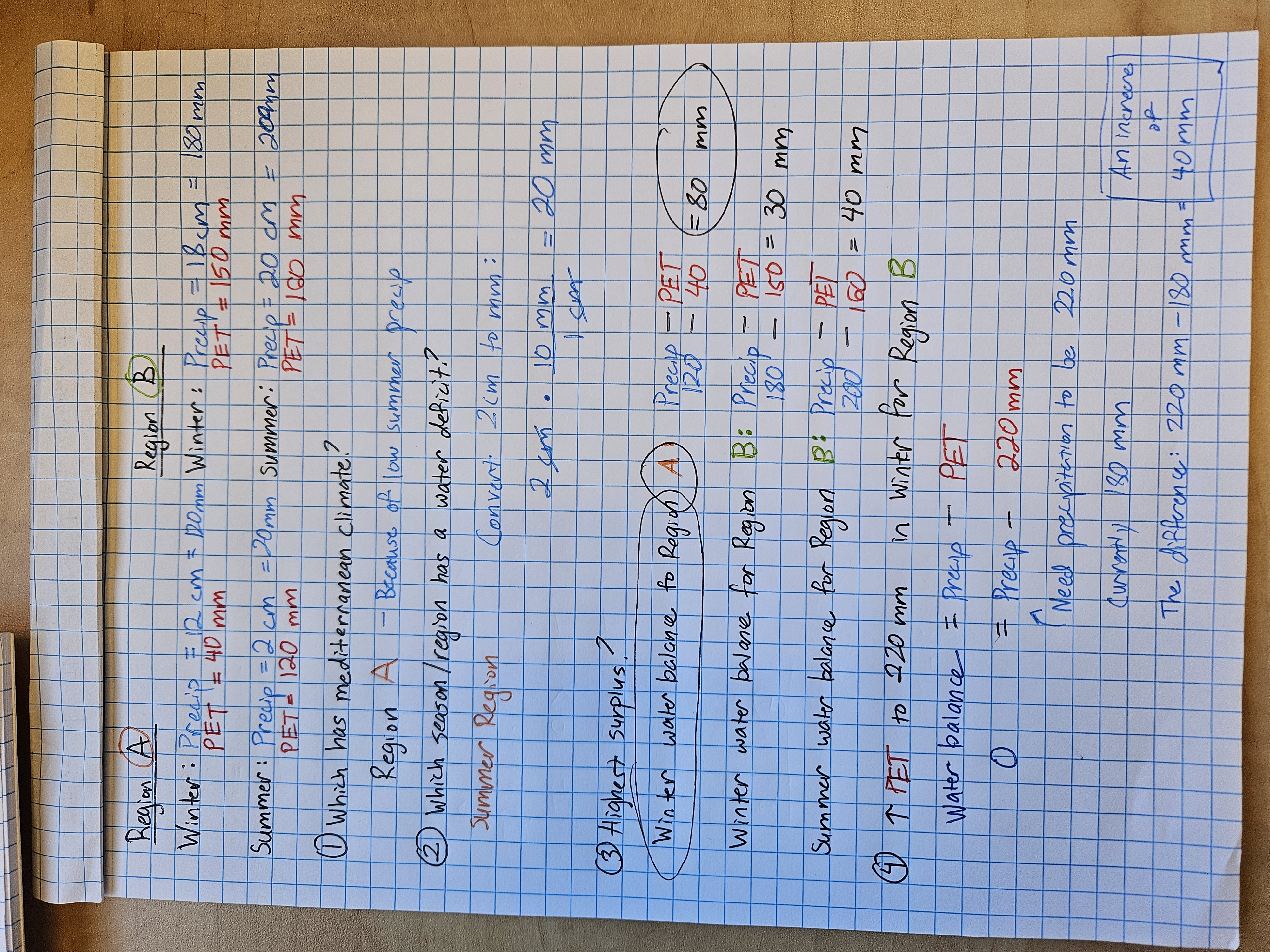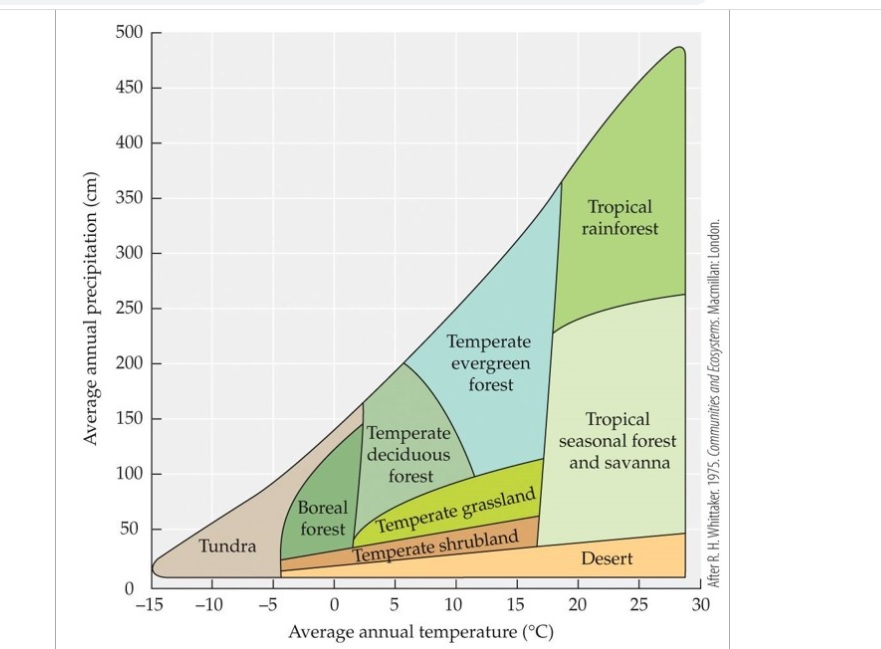3. Biomes
1/23
There's no tags or description
Looks like no tags are added yet.
Name | Mastery | Learn | Test | Matching | Spaced |
|---|
No study sessions yet.
24 Terms
a. Walter-Lieth climate diagrams
i. How to read precipitation and temperature ii. Matching climate diagrams to biomes or climates
iii. How to determine northern or southern hemisphere iv. How to determine dry conditions versus wet conditions
Water balance
i. Water balance equation, solving math problems
ii. Matching precipitation and PET values to seasons or climates
iii. Reasoning through scenarios of increased/decreased precipitation and/or PET

Biome definition
large scale plant communities, based on temperature and precipitation (biotic/abiotic)
Net primary productivity (NPP) definition
net amount of energy per unit time that producers capture by photosynthesis and chemosynthesis minus amount of use in celular respiration
NPP= GPP (Gross Primary Productivity) — R (respiration)
1. What structures terrestrial biomes
characterized by plant communities because plants are less mobile than animals so they have to adapt to climate conditions to persist
Temperature an precipitation determine biome distribution
Average annual precipitation versus average annual temperature plot of biomes

Types of terrestrial biomes
a. Tropical rainforest
b. Tundra
c. Desert
d. Tropical seasonal forests and savannas
e. Temperate grasslands and shrublands
f. Temperate deciduous forests
g. Temperate evergreen forests
h. Boreal forests
i. Mediterranean
a. Tropical rainforest
high precipitation and temperature with no seasonality
even temperature
high levels of net productivity
near equator
b. Tundra
very dry
low precipitation
some seasonality
very low temperature (9 months below 0 degrees C)
low amounts of plant
low net productivity
c. Desert
extremely low precipitation
high temperatures
dry summers and winters
drought driven climates
d. Tropical seasonal forests and savannas
wet summer and dry winters
varying precipitation
consistent weather
e. Temperate grasslands and shrublands
wet summer
dry winters
high seasonality
f. Temperate deciduous forests
mid altitude forests
medium precipitation with no seasonality
medium temperatures with seasonality
g. Temperate evergreen forests
no droughts
trees keep their leaves
h. Boreal forests
low precipitation with some seasonality
generally low temperature (6 months below 0 degrees C)
i. Mediterranean
high seasonality in temperature and precipitation
wet winters and dry summers
What structures aquatic biomes
water movement
salinity
light
Types of aquatic biomes
a. Rivers and streams
b. Lakes, ponds, reservoirs
c. Influence of climate change on aquatic biomes
d. Ocean
a. Rivers and streams
water runs downhill
streams converge into bigger/longer streams/rivers
structured by distance to shore (nutrients) speed of water flow
b. Lakes, ponds, reservoirs
d. Ocean
i. Estuary
ii. Continental shelf
iii. Open ocean
i. Estuary
meeting of rivers and oceans
ii. Continental shelf
diverse and productive
includes coral reefs
most productive biomes with net productivity
iii. Open ocean
pelagic: photic zone where photosynthesis occurs
Aphotic zone: no photosynthesis
Abyssal zone really cold and dark; cover greatest surface